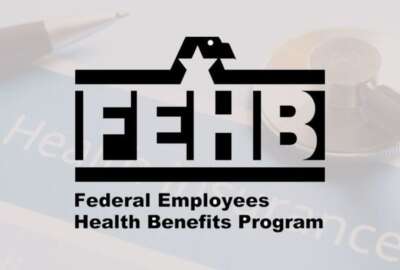OMB to increase IT project oversight with improved dashboard
Federal Chief Information Officer Steven VanRoekel said agency technology managers will receive reports on the accuracy of the data they put in the portal. The ...
wfedstaff | June 4, 2015 6:11 pm
In version two of the IT Dashboard, the Office of Management and Budget is trying to fix some of the long-standing complaints about the portal.
From the Government Accountability Office to lawmakers to the general public, users have criticized the almost three-year-old site for poor data quality and a lack of specifics around projects.
But in the updated dashboard, which OMB launched Tuesday, the administration has tried to make the site more user-friendly and help it live up to its initial goals of making common and timely performance data available around IT spending.
“We focused on accessibility of the data. That really means being able to look into individual investments,” said Steven VanRoekel, the federal chief information officer, in an interview with Federal News Radio. “In prior versions, you were able to see sort of the major investments across the federal government, but you weren’t able to dive in and see the components of the investments.”
Changes to 300s, 53s
In preparation for making data more accessible, OMB changed the Exhibit 300 and Exhibit 53 reports due from agencies during the budget development process.
Dominic Sale, an OMB policy analyst, said the White House asked for more detailed descriptions of the projects that come under the investments.
“Investments aren’t always aligned one-to-one with projects,” he said. “In fact, many times, there are multiple projects going on underneath an umbrella investment. What we’ve done is we’ve broken apart these investments into their component projects and are requiring agencies to report each specific project and their cost, schedule and performance down to the detailed activity level against each of these projects. You can quickly pinpoint where any issues are in terms of performance on the development side.”
OMB also changed agency requirements for projects that are in the operational phase and not in the development phase.
Sale said CIOs have told OMB that reporting cost and schedule data against legacy projects doesn’t always make sense.
So, OMB now is asking agencies to report cost, schedule and performance data for projects under development, and not legacy programs.
Instead, the dashboard will display data for legacy systems based on a specific set of metrics for that system.
“There is a lot more clarity now in the dashboard to see the distinction between the two areas,” Sale said. “I think that will be huge for people who want a quick view of an investment to see where the issues are. Are the issues with the actual development work or is the system just not doing what it’s supposed to do?”
An eye toward duplication
The second major upgrade is helping agencies and CIOs spot duplicative IT investments. VanRoekel said reducing overlapping investments is a major initiative for his office.
“We’re allowing agencies to dive into their data and identify and address duplication by reclassifying the things we present and really showing duplication in the forefront,” he said. “Another is around data quality. We have now new data quality reports for CIOs, and we give them validations and warnings to prevent erroneous data from coming into the system. This will help around a lot of the data quality opportunities we saw in the past.”
VanRoekel said OMB has been successfully testing the data validation reports with CIOs over the past few months.
Sale said agency data is run through a series of algorithms, looking specifically at whether the data is incomplete or inaccurate, whether the projects are broken down into modules, the number of contracts listed and how much money the agency says has been spent versus what’s in USASpending.gov. He said OMB also will look at data that is deemed perfect because that also could be a sign of a problem, as is frequent changes to cost, schedule or performance.
“We don’t create the data within the IT Dashboard. The data is all provided by the agency,” Sale said. “We believe the agencies are ultimately accountable for the data quality, and GAO has been saying that in the more recent reports. They have been making more recommendations to the agencies themselves to improve their data quality.”
He added OMB has put a lot of tools in place to help agencies improve their data quality, and is working closely with agencies to help them ensure the information in the Dashboard is as accurate and complete as possible.
Historical trends and more
The final major change in version two is that OMB is providing more data — such as historical trends, which are available via XML and other machine-readable formats — and more tools to do analysis.
“This helps CIOs not only engage with the data through their own tools, but lets the public have any freedom to look at these investments in their own way,” VanRoekel said.
He said the IT Dashboard is not an end product, but a tool to give his office and CIOs a more complete view of the spending and the performance of technology programs.
“If we see a lot of erroneous activities, or if there are performance problems or other things that are coming up in data quality reports, that for us will raise flags to say ‘Hey, maybe we need to TechStat that investment or take a harder look at that,'” VanRoekel said. “This will give us improved visibility into places where we should go and look.”
VanRoekel also said by offering more data and better tools, the general public can use the information in different ways.
“Our vision is to open this up via an API so you can write applications and go in and consume IT Dashboard data,” he said. “It’s coming.”
RELATED STORIES:
OMB upgrades IT Dashboard with new tools, better data
GAO: IT Dashboard accuracy improving
IT Dashboard pushes CIOs back to the front and center
Copyright © 2024 Federal News Network. All rights reserved. This website is not intended for users located within the European Economic Area.
Jason Miller is executive editor of Federal News Network and directs news coverage on the people, policy and programs of the federal government.
Follow @jmillerWFED






